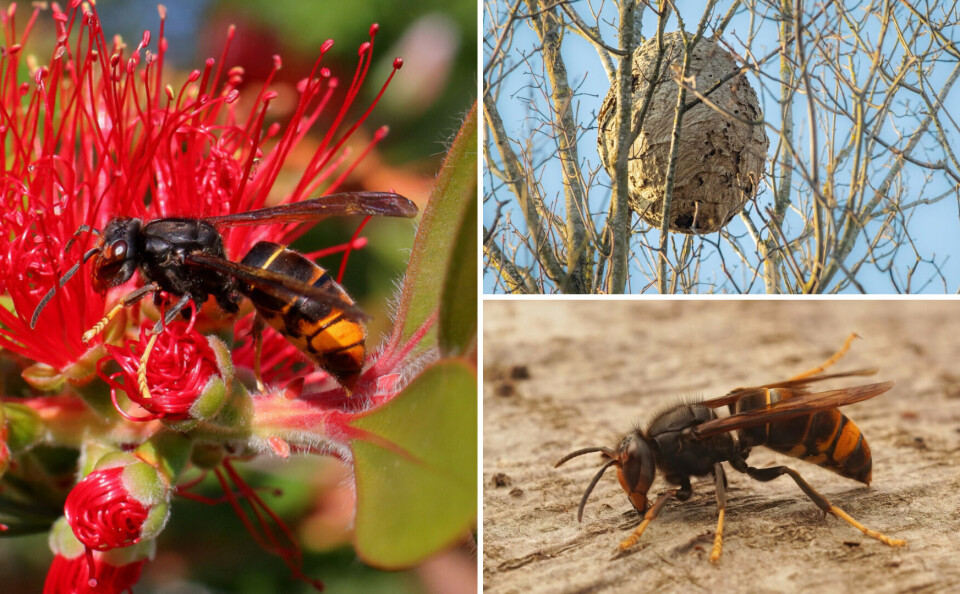-
Festivals, holidays and places to visit in France in April 2025
Including a gladiator battle in a Roman arena, an international garden festival and the Paris marathon
-
Many Société Générale customers to be charged additional fees from April
There is some good news for international banking and instant transfers, however
-
Why gas prices in France are rising in April - and by how much
It comes after six consecutive monthly rises. Try these tips to reduce your bills
Warning over underground Asian hornet nests in France
The rising number of Asian hornets is leading to some spending winter in underground holes that are hard to spot

A warning has been issued for people to look out for underground nests of Asian hornets, an invasive species that can be aggressive when threatened, as their growing population in France has led many queens to overwinter in holes in the ground.
In spring, Asian hornets repopulate and can suddenly emerge from these holes and catch people off guard, warns the Groupement de défense sanitaire des abeilles (GDSA), an association of beekeepers in Brittany.
The association, which arranges large-scale Asian hornet trapping exercises in the spring to try and protect honey bee hives, asks people to be on the look-out from autumn to early summer for such underground nests.
During the autumn many Asian hornets queens move into their winter abodes, discreet holes, which are harder to spot than their hives that hang in the trees.
How aggressive are Asian hornets?
Asian hornets, which were identified in France around 20 years ago and which have since spread over much of Europe, usually have their main nests high in trees, and tend not to attack humans unless they feel their nest is threatened.
However, there have been incidents, the best known of which was in south Charente, where people have been attacked from low level nests.
In the Charente case, a man in his 50s mowing a field with a “gyro” mower on a tractor, was attacked when he ran over a nest.
He had his mobile phone with him and was able to call his brother, who rushed to the scene with emergency services, but he was dead by the time they got there.
Both the brother, a farmer, and the emergency services identified the hornets as Asian hornets, but this was called into doubt by some experts who said they were more likely to be the slightly larger European hornets, which sometimes nest in hedges.
What do Asian hornet nests look like?
The main hornet nests, which can be the size of a large beach ball and are almost always found high in trees, are often the second nest a colony makes in the year with the first small nest being found in any available niche.
During the winter only the queens survive, frequently crawling into sheltered spots in buildings or finding niches in trees – and some have taken to crawling into holes in the ground such as those made by moles.
In the spring these queens quickly start a new colony, often in trees, but sometimes, if the queen has overwintered underground, in the same hole she sheltered in.
GDSA warned that this spring it was called on to destroy a few nests in Brittany that members had found in the ground.
These first nests are abandoned as the colony grows and the hornets then make their main nest in the tops of trees.
A pest controller who operates between Nantes, Angers and Cholet, Nicolas Le Doriol, told The Connexion that he had been called out to deal with underground Asian hornet nests, but they were not very common.
“Most cases are usually where people find nests in outbuildings,” he said.
“But there have been cases where people have realised there are underground nests.
“I had one case where someone was using a rotovator to prepare their garden. They ran over a nest so had to flee for their lives. When I got there the rotovator was still running.”
‘Growing numbers’
Mr Le Doriol warned people not to take chances around Asian hornets, which can become aggressive if they feel threatened.
“The sting is very painful, but above all it seems to provoke more allergic reactions than bees or wasps. If people are not treated quickly by first aiders or in hospital they can die.”
He said it was unlikely that the Asian hornets were learning that overwintering in the ground was a good strategy to survive the winter.
“It is just chance that a queen outside, looking for a niche, finds a hole,” he said.
“But because the number of Asian hornets is growing year after year, we are finding more of these underground nests in the spring.”
GDSA told Ouest France newspaper, they had even been called to a case where an Asian hornet nest had been found under a sewer cover.
Ouest France said that in Brittany between 2018 and 2021, at least 66,000 Asian hornet nests had been destroyed – and that experts think that only 20% of nests are ever spotted.
Related articles:
Giant 800-metre ant colony beneath beach in the south of France
How can France fight invasive species like Asian hornets?
Do not destroy Asian hornet nests - new advice from French experts
Asian hornets are still prolific in France due to mild autumn
























